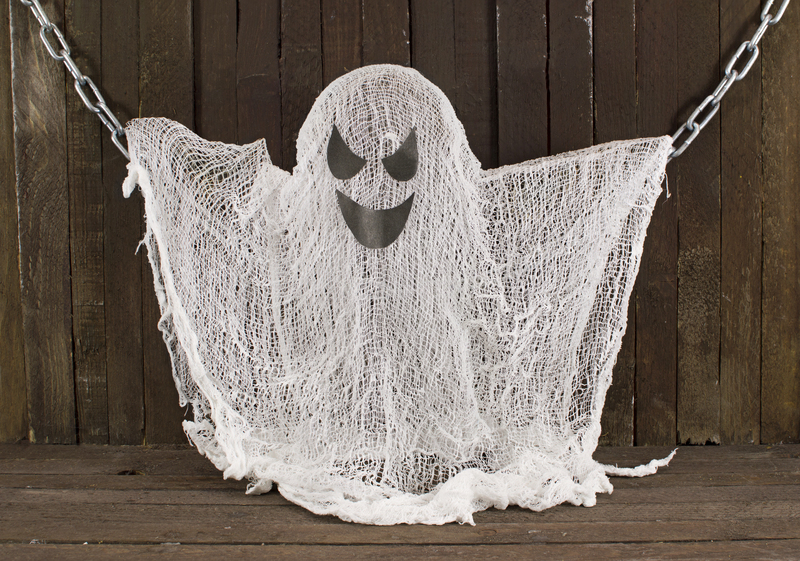How to Pack Fragile Items Safely When Moving: The Ultimate Guide
Moving to a new home or office can be both exhilarating and nerve-wracking, especially when it comes to handling your delicate possessions. Ensuring fragile items are packed securely is critical to avoid heartbreak and unnecessary losses. From cherished glassware to prized artwork and electronics, the process demands careful attention and the right strategy. In this comprehensive article, we'll detail effective methods on how to pack fragile items safely during a move, offering expert tips, step-by-step guidance, and pro tricks for optimal protection.

Understanding Fragile Items and Why Proper Packing Matters
Before diving into the best ways to pack breakables, it's crucial to understand what constitutes a fragile item. These include:
- Glassware and crystal
- Fine china and porcelain
- Electronic equipment (TVs, computers, music systems)
- Artwork and picture frames
- Mirrors and decorative glass
- Ceramic or clay items
- Antiques and collectibles
Poor packing can lead to:
- Irreplaceable sentimental losses
- Costly damages and repairs
- Injury from broken glass or sharp edges
- Claim issues with moving companies
Essential Packing Supplies for Fragile Belongings
Investing in quality materials is the first step to ensure fragile possessions endure the rigors of relocation. Here's your essential packing kit:
- Sturdy boxes: Small to medium sizes are best for breakables.
- Bubble wrap: Acts as a shock absorber for delicate items.
- Packing paper: Provides a protective cushion.
- Foam sheets or peanuts: Fills empty spaces and prevents shifting.
- Dish packs: Boxes designed for plates and glassware.
- Markers: For labeling boxes "FRAGILE".
- Tape: Heavy-duty, for sealing boxes securely.
- Stretch wrap: Keeps items from moving and guards surfaces from scratches.
Bonus Tip: Recycle by using old newspapers, towels, or clothing as extra padding.
Step-by-Step Guide: How to Pack Fragile Items for Moving
Following a systematic approach is essential for maximum protection of delicate items during transit. Let's break down the packing process:
1. Organize and Inventory Your Fragile Belongings
- Group similar items together (e.g., all glassware in one section).
- Create an inventory list for valuables--helpful for insurance and unpacking.
- Photograph valuable or antique items for additional documentation.
2. Prepare and Reinforce Moving Boxes
- Double-tape box bottoms and corners for added strength.
- Line each box with a generous layer of crumpled packing paper or bubble wrap for base cushioning.
3. Wrap Each Item Individually
- Glassware and dishes: Place packing paper inside openings, then wrap fully. Use bubble wrap for extra fragile pieces.
- Electronics: If original packaging is unavailable, use anti-static bubble wrap and cover screens with foam sheets.
- Artwork and mirrors: Cover moving pads or cardboard sheets, then wrap with stretch film.
- Collectibles/figurines: Double-wrap small or irregularly shaped pieces and use plenty of padding.
4. Box Packing Strategy: Place Heaviest on the Bottom
- Heavier, sturdier fragile items go on box bottoms; lighter, delicate items are layered on top.
- Place items upright (dishes and glasses are more stable on their edge, not stacked flat).
- Fill gaps with packing peanuts, foam, or crumpled paper to prevent shifting.
5. Seal, Label, and Handle with Care
- Seal boxes: Use strong packing tape to close boxes securely, adding tape along seams and edges.
- Label clearly: Mark all sides of the box with "FRAGILE" and use arrows for upright placement.
- Special instructions: If contents are sensitive to temperature or moisture (like artwork or wine glasses), add specific notes.
Special Packing Techniques for Specific Fragile Items
Different types of fragile goods require unique packing methods. Here are expert-recommended approaches for the most breakable items:
How to Pack Glassware and Crystal
- Stuff glasses and stemware with packing paper to maintain internal structure.
- Layer bubble wrap around each piece and secure with tape.
- Store upright in dish packs, separating rows with cardboard dividers.
- Never stack glasses horizontally for long travel distances.
How to Pack Plates and Bowls
- Wrap each dish individually, then stack groups of five to six with paper between each.
- Pack vertically on edges rather than flat--their strongest position against shock.
- Place extra padding on sides and corners of boxes.
How to Pack TVs and Electronics
- If possible, reuse original device boxes and molded inserts.
- Wrap screens in microfiber or anti-scratch cloth, then bubble wrap.
- Pack cables, remotes, and small parts in separate labeled bags.
- Fill every empty cavity with peanuts or soft foam to prevent movement.
How to Pack Artwork, Mirrors, and Frames
- Use custom-sized mirror or picture boxes when available.
- Cross tape glass surfaces with painter's tape to prevent shattering.
- Layer with corner protectors and thick wrapping, then seal in a box no larger than necessary.
- Store and move these upright, never flat.
Additional Tips for Moving Fragile Items Safely
- Use a moving dolly or cart for heavy fragile boxes to minimize jarring.
- Don't overpack: Heavier boxes are more likely to be dropped and contents damaged.
- Communicate: Alert your movers to boxes with highly fragile goods.
- Insurance: Consider extra valuation coverage for precious or irreplaceable items.
- Personal transport: For the most valuable or sentimental items, move them yourself in your vehicle.
Common Mistakes to Avoid When Packing Fragile Goods
Even well-intentioned movers often make mistakes. Steer clear of these frequent errors:
- Under-padding: Not enough cushioning leads to easy breakage.
- Using weak boxes: Avoid reusing worn, damp, or structurally unsound boxes.
- Improper labeling: Unlabeled fragile items are at risk of rough handling.
- Rushing the process: Take your time packing and sealing each box. Patience equals protection.
- Leaving empty space: Loose items shuffle and collide, causing breakage.
Unpacking and Post-Move Fragile Item Care
The journey isn't over when you arrive at your new location. Mindful unpacking helps avoid last-minute mishaps:
- Move fragile boxes in first and place them out of high-traffic areas.
- Unpack on soft surfaces (e.g., carpet or blanket) to reduce the impact of unintentional drops.
- Inspect each item for damage before discarding packing materials.
- Refer to your inventory list and note any claims for moving insurance promptly.

Frequently Asked Questions (FAQs) About Packing Fragile Items
- Q: What's the best packing material for delicate items?
A: Bubble wrap offers superior shock absorption, but packing paper is great for scratch prevention and as a secondary layer. Double-boxing adds another level of security for extremely fragile or valuable pieces. - Q: Should I let professionals pack my fragile belongings?
A: If you have high-value, antique, or sentimental items, hiring pros with experience in packing breakables ensures added peace of mind and often better insurance coverage in case of damage. - Q: Can I use towels or clothing instead of bubble wrap?
A: For short moves, clean towels and clothing can provide decent padding, but for longer hauls or extra breakable goods, specialty packing materials offer more reliable protection.
In Summary: Moving Fragile Items Without the Stress
Learning how to pack fragile items safely for moving can mean the difference between a smooth transition and a stressful setback. By understanding the right supplies to use, wrapping each item carefully, packing boxes correctly, and labeling everything accurately, you guarantee the best chance of your cherished possessions arriving intact. Don't forget to give yourself plenty of time--rushed moves lead to costly mistakes. With the above guide, you're equipped to handle your next move with care, confidence, and breakage-free success!
Ready to Move With Confidence?
For more tips on packing, protecting valuables, and ensuring a successful relocation, explore our additional resources or connect with our moving experts today. Safe journeys and happy moving!



